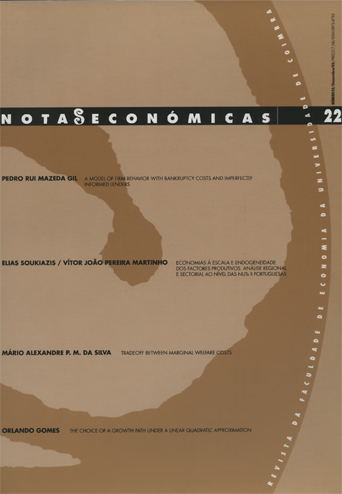A model of firm behaviour with bankruptey costs and imperfectly informed lenders
DOI:
https://doi.org/10.14195/2183-203X_22_1Abstract
Based on Greenwald and Stiglitz (1988, 1990), this work explores a simple model of microeconomic behaviour that incorporates the impact of asymmetric information in capital markets on firms’ optimal investment decision rules. Starting from a model of equity-constrained firms, where expected bankruptcy costs (reflecting each firm’s quality) imply a higher user cost of capital and, thus, a lower investment by each firm, we move to a context of adverse selection in the debt market, where banks offer a ‘onesize-fits-all’ contractual interest rate. This implies that ‘poor’ firms tend to invest more vis-à-vis ‘good’ firms, since they now take into account that higher expected default rates may not be matched by comparably higher contractual interest rates, therefore weakening the impact of bankruptcy costs on firms’ investment decisions.Downloads
Download data is not yet available.
Downloads
Published
2016-09-22
Issue
Section
Articles
License
Authors retain copyright and grant the journal right of first publication with the work simultaneously licensed under a Creative Commons Attribution License that allows sharing the work with recognition of authorship and initial publication in Antropologia Portuguesa journal.









